There can be your advertisement
300x150
The Main Household Item: How the Washing Machine Has Evolved Over 100 Years
We explain how the washing machine evolved from a primitive tub with soap solution into a smart home mini-laundry room
This is what we do today: toss in the laundry, add detergent, press the right buttons — and go about your business. In the past, you had to manually operate and maintain the mechanism, and also take care of your hair — it could get caught in the spin cycle! We tell you how the familiar electric appliance evolved over more than a century.
1900s
The first prototypes of modern washing machines appeared in America. Simple devices in the form of wooden tubs with cylindrical drums were used to hold laundry and clothes, filled with soap solution, and manually rotated. Excess water was wrung out using manual rollers — the laundry and clothes also had to be passed through them manually.
To wash all the clothes in a house using such a machine required enormous effort and nerves, so at that time housewives tried to use public laundromats or laundry services if they could afford them.
1910s
In 1908, an engineer from Chicago, Alva Fisher, invented a washing machine with an electric motor. Two years later, the Hurley Machine Co. launched it into mass production under the ambitious name Thor.
The wooden drum inside the machine's housing rotated eight times in each direction, and no longer required manual rotation — just pull the handle at the bottom of the washing machine like in a car.
However, all mechanisms inside the device were exposed — imagine how much noise it made. Plus, it was also unsafe: manual rollers often injured fingers, and once hair got caught in one of them, injuring a girl helping her mother with laundry (luckily, she only received a scar on her head).
Nevertheless, Mr. Fisher’s invention went down in history as a new class of electrical household appliances because it made the laundry process easier for housewives, which previously required colossal effort and serious time investment.
1920s
By this time, the number of companies manufacturing washing machines in the U.S. exceeded a thousand — new appliances were in demand. Within ten years of the release of Thor, the number of laundromats and domestic servants in American homes significantly decreased, and according to sociologists, laundry returned from public laundromats back into the home.
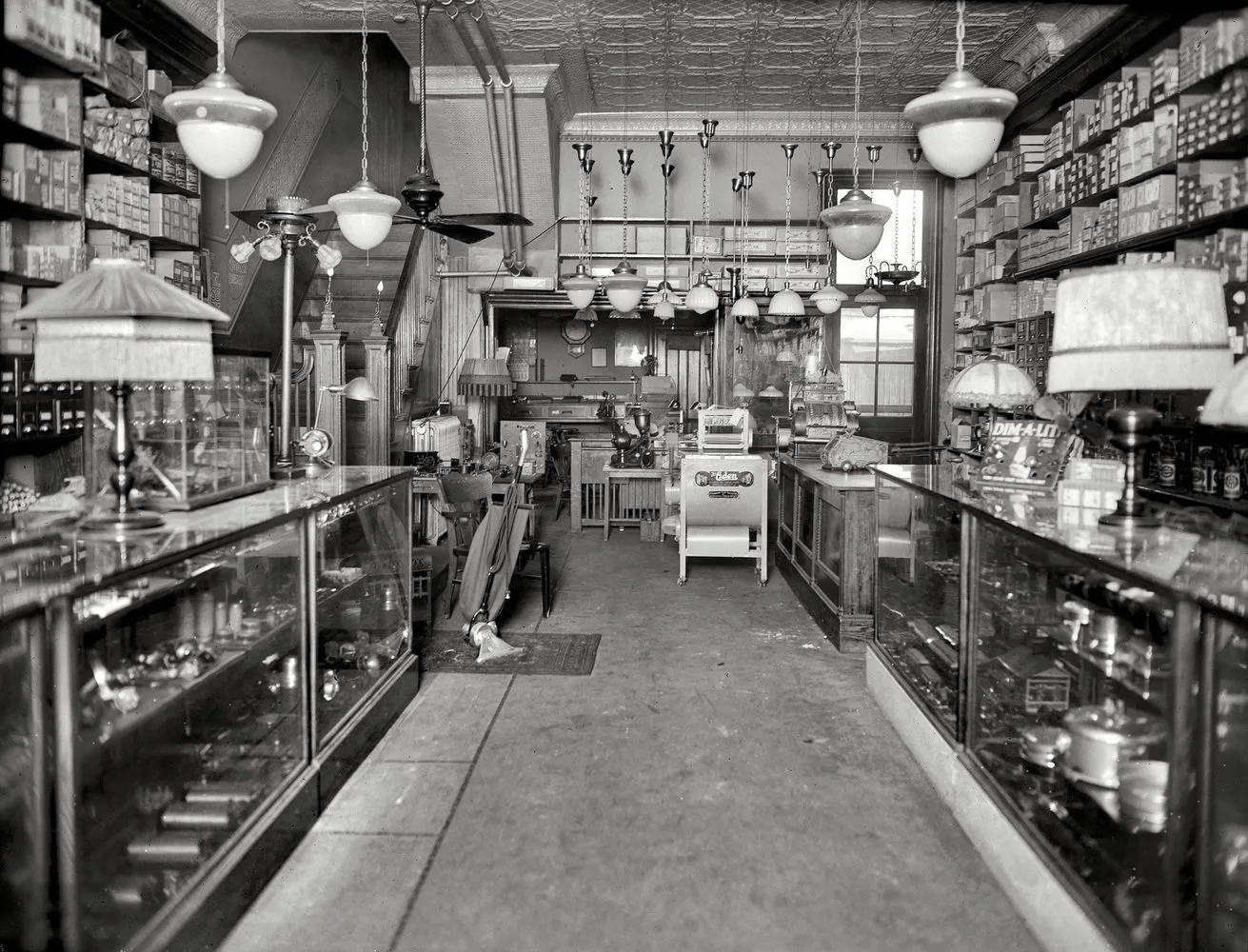
1923 year. Appliance store, USA. Center of the image — washing machine
The construction of washing machines became more advanced: wooden tubs lined with sheet copper went into the past and were replaced by enamel-coated steel tubs. However, safety was still little considered — the internal parts of washing machines were still exposed.
One of the first companies to hide these inside a plastic casing was Whirlpool. It also ensured that spin rollers only rotated in one direction to avoid injuries.
1930s
Washing machines became cheaper and more accessible, and started being sold in Europe as well, not just the U.S. The designs began to include drain pumps with electric motors and mechanical timers — for the first time, housewives could set a wash cycle. The first dryers appeared but were still very expensive.
The peak of the Great Depression reduced demand for simple American appliances, and housewives once again started visiting public laundromats. In 1937, the first laundromat or self-service laundry opened, where each stage of washing to drying was handled by the visitor themselves.
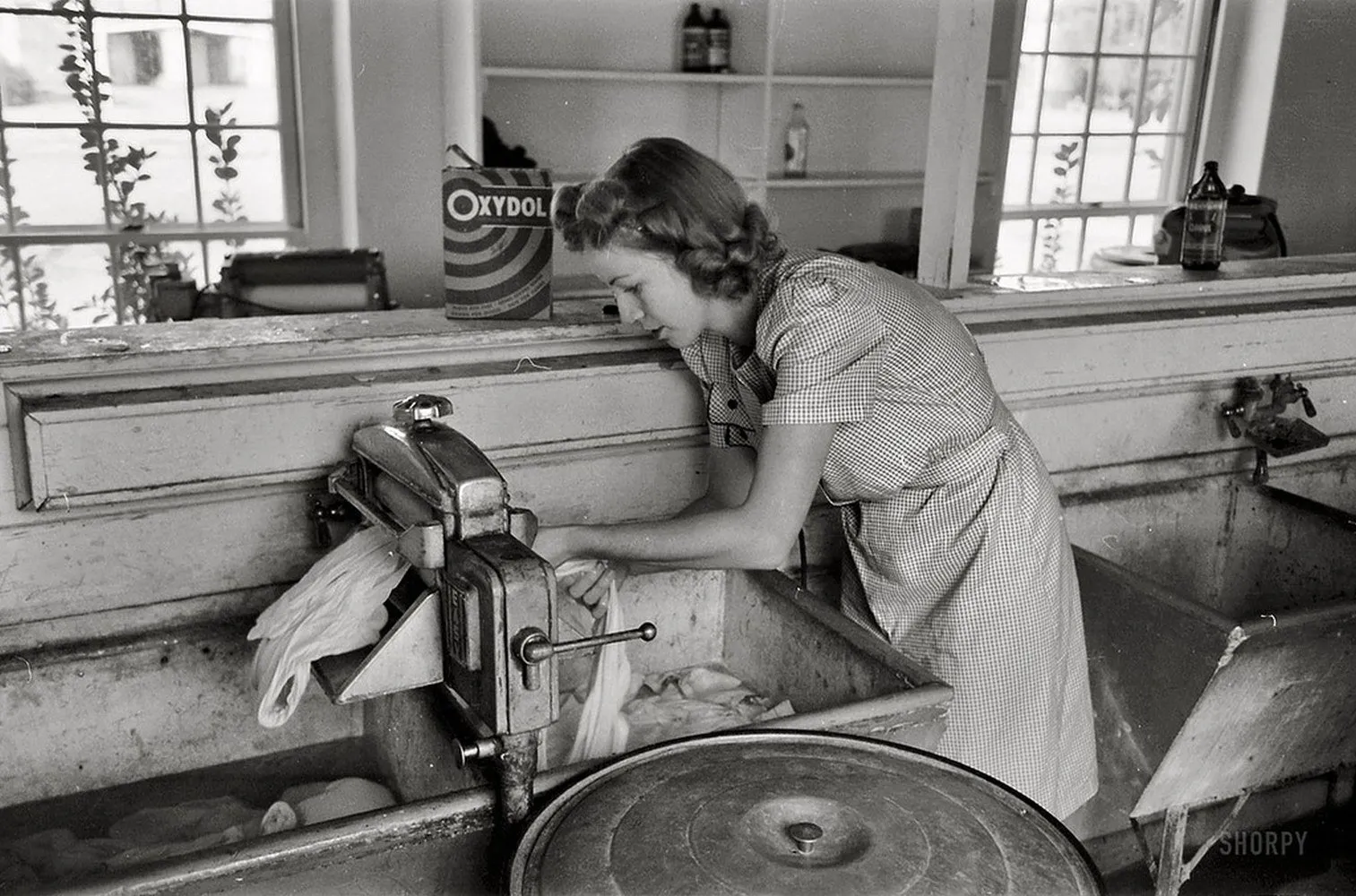
1930s. In a public laundromat
1940s
At the end of the 1940s, two American companies, Bendix Corporation and General Electric, simultaneously announced the launch of the first fully automatic washing machine that washes, rinses, and wrings out water in one cycle.
No more human effort required: the program starts the machine, pressure relays and electromagnetic valves shut off water supply after filling the tub, thermostat controls water temperature, and a timer governs operation time.
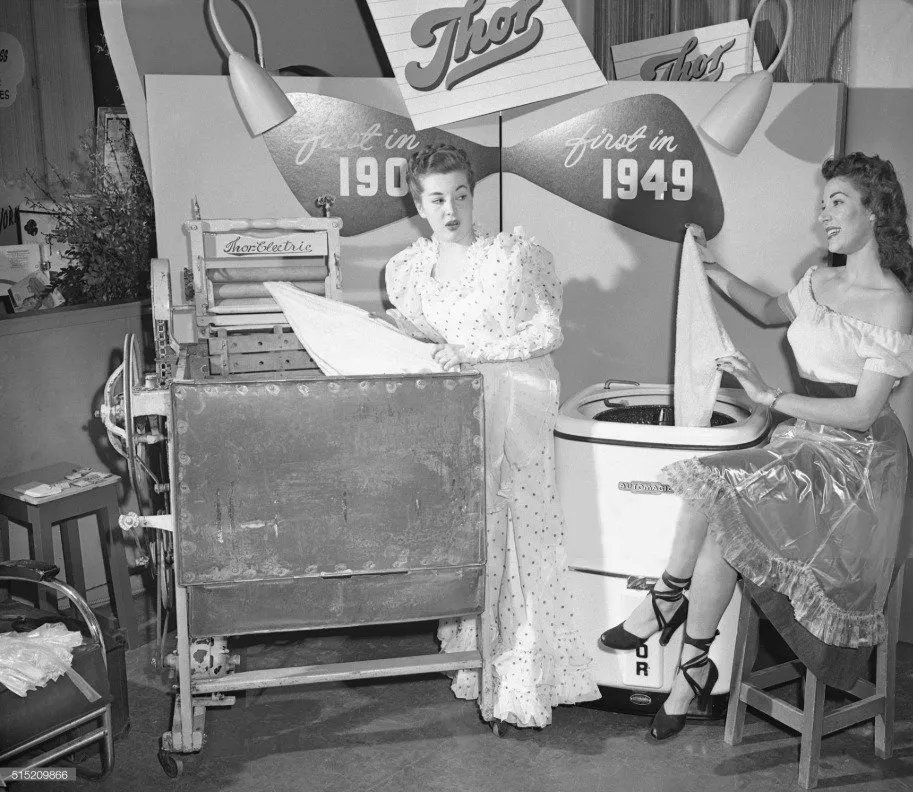
1950s
In the early 1950s, washing machines gained a new feature — wash programs tailored to each type of laundry, and the function of manual rollers was now performed by an automated wringer — a centrifuge.
The first automatic machines were adopted in Europe. Here, drum-type machines were preferred over the active type with a longitudinal axis and blades built into the tub, which was common in the U.S.
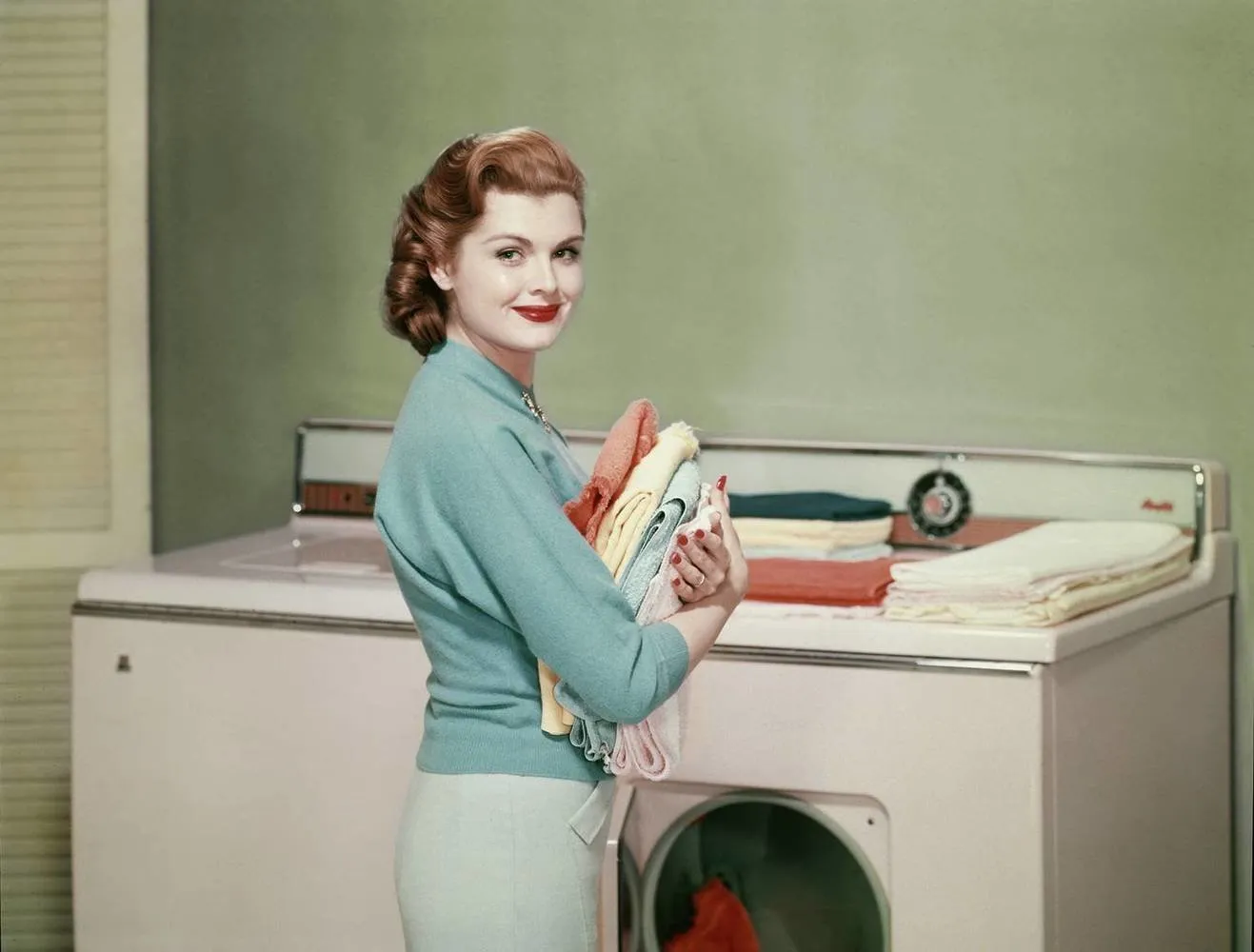
In the USSR, there were no advanced automatic models in stores. The first Soviet washing machines were produced in Riga, Kirov, and Cheboksary. Water had to be filled and drained manually, and even up until the 1970s, these were quite primitive models. However, they had their advantages: for example, if any part broke down, it could be repaired by the user.
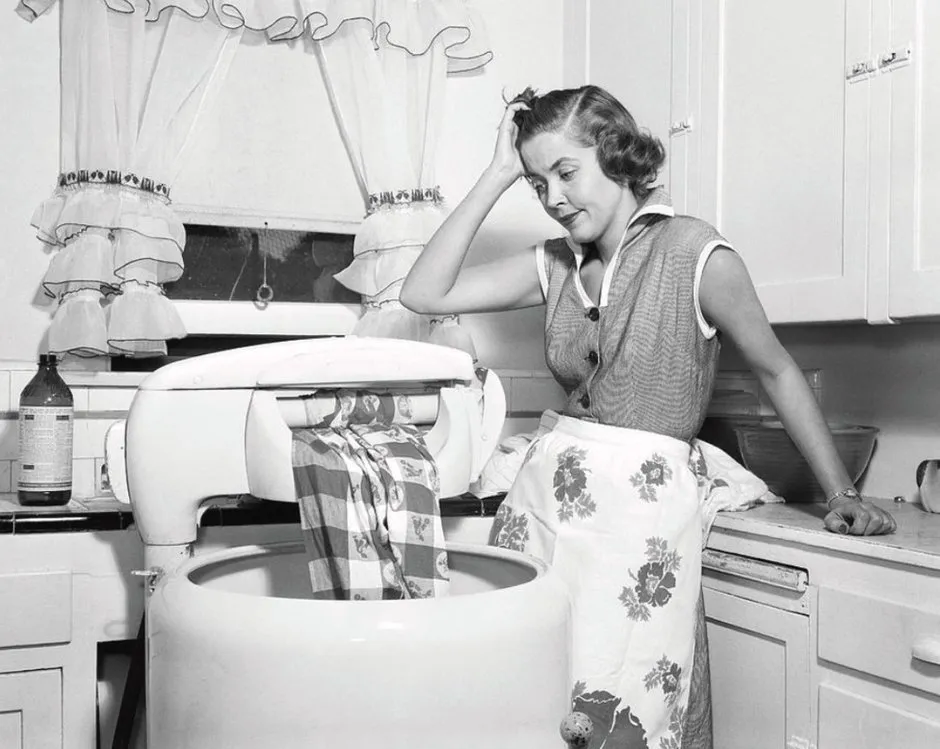
1970s
The first Soviet automatic washing machine, the "Vyatka-Automatic," appeared at the end of the 1970s. A precise copy of Ariston washing machines, it was produced in Kirov under license from an Italian company. However, it soon was taken off production due to insufficient electrical capacity for the machine. A corrected and improved model, the "Vyatka-12" (with 12 representing the number of wash programs), was released in 1980.
Advertising washing machines in the USSR during the 1970s and in the U.S.
In the U.S., meanwhile, engineers were developing washing machines based on microprocessors and implementing innovations to reduce water consumption and save electricity during washing.
1990s
American engineers came up with a control system for washing machines operating on the principle of "fuzzy logic," where wash programs were not just a built-in sequence of commands. Now it was a complex system that considered multiple factors such as water temperature, degree of dirtiness, or fabric type, and allowed users to select any options and adjust settings: choose a wash cycle, increase the number of rinses, cancel spin, etc.
Programs for wool garments were introduced — an option unavailable in earlier washing machine models.
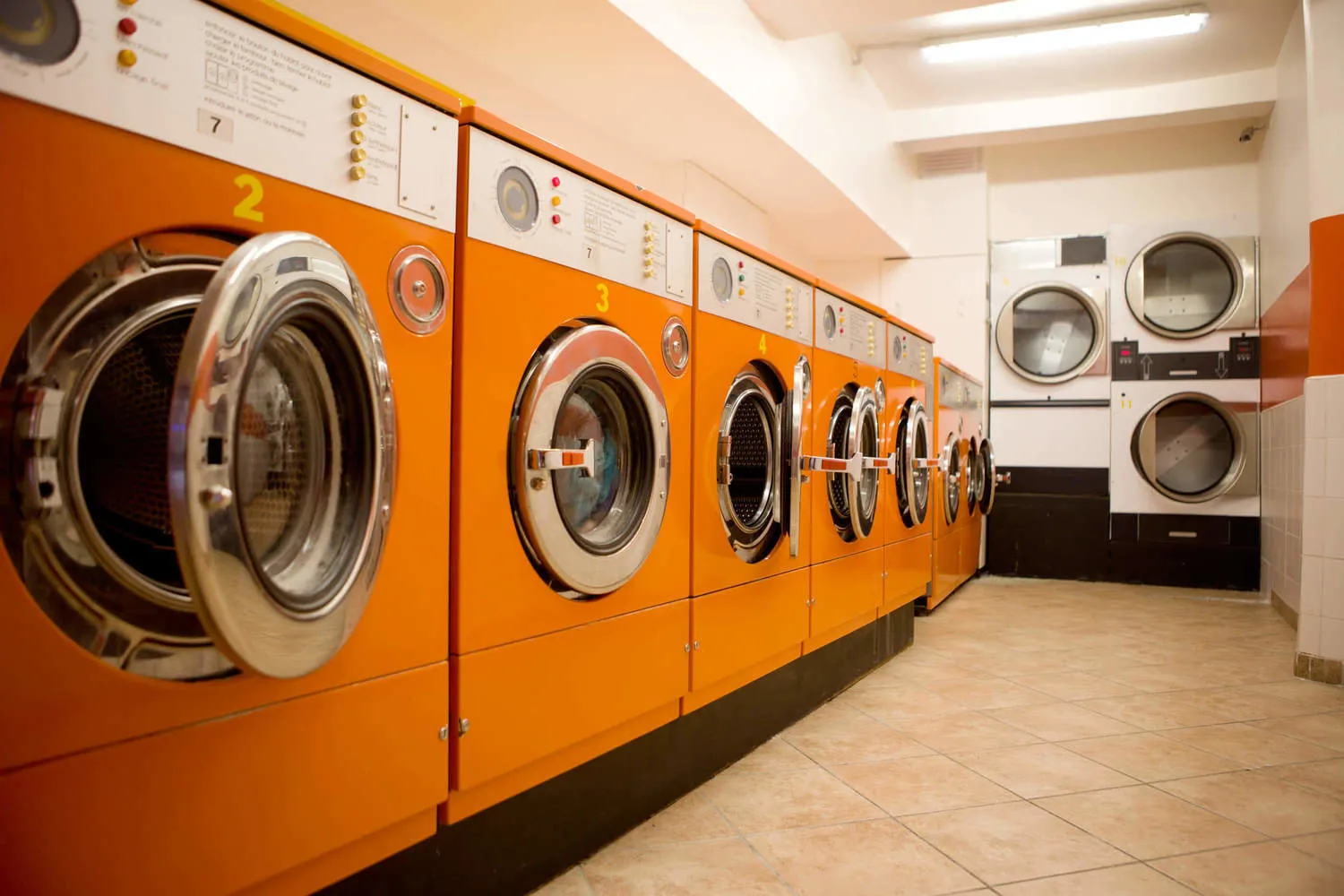
2000s and Today
Now that all stages of washing are automated, the focus is on gentle handling of each fabric type and effective stain removal with minimal mechanical impact. Leading appliance manufacturers continue to develop new approaches to solving these tasks.
Another key factor for modern washing machines is energy efficiency. Large companies and holding groups show a trend toward reducing the energy consumption of appliances to class A++ and A+++ levels, which saves money on utility bills and reduces environmental harm.
Smart home systems are gaining popularity, so many manufacturers now produce washing machines with Wi-Fi adapters to manage laundry remotely using a smartphone, even when no one is home.
It's hard to say what washing machines will look like in another 20–30 years. But it seems that the phrase "manual washing" will soon only be associated with a delicate fabric wash mode on the display, rather than something long, tedious, and skin-drying. Doesn't that sound great?
More articles:
 If You Are on the Dacha: Setting Up a Barbecue Area
If You Are on the Dacha: Setting Up a Barbecue Area 8 Apartments with a Spring Vibe
8 Apartments with a Spring Vibe Personal Experience: How We Designed a Kitchen for 50 Thousand Rubles
Personal Experience: How We Designed a Kitchen for 50 Thousand Rubles Paradise in a Hut: How Lovers Built a House on a Vineyard
Paradise in a Hut: How Lovers Built a House on a Vineyard How to Survive in an Apartment During Heat Waves: 6 Tips
How to Survive in an Apartment During Heat Waves: 6 Tips Choosing a Color Palette for the Bedroom: 6 Designers' Tips
Choosing a Color Palette for the Bedroom: 6 Designers' Tips How to Make Hugge from Cheap Material Available on Every Garden Plot
How to Make Hugge from Cheap Material Available on Every Garden Plot How to Quickly Clean Tiles: Tips You Didn't Know About
How to Quickly Clean Tiles: Tips You Didn't Know About